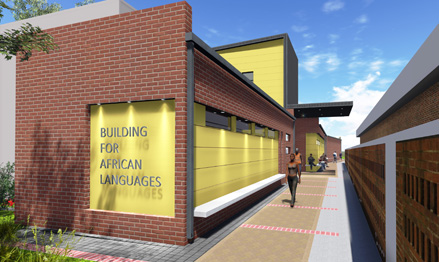|

|
| DHET Sound Studio, African Languages and Humanities projects. |
More students will be accommodated on our campuses, with two new residences being built on the Qwaqwa and Bloemfontein Campuses respectively. The residences are part of a grant received by the Department of Higher Education and Training (DHET).
The new residences will accommodate 250 students each and the planned completion date is end of 2014.
Other major projects planned for the three campuses are a Student Life Centre on the Qwaqwa Campus, new lecture halls for the South Campus and a new sound studio on the Bloemfontein Campus. The sound studio will be erected where the old squash courts used to be.
The Department of Physical Planning stated the aim is to create a facility that can house a recording studio that will function as a multi-purpose centre where students can get practical experience in sound and visual recording. Albie Louw, Chief Officer: Property Management in the Department of Physical Planning, says the studio will have a screening room, a multi-camera recording studio, editing room, video- and audio-control room and lecture-recording studios.
The projects have different completion dates, but all fall within the 2013/2014 and 2014/2015 financial years.
On the Qwaqwa Campus, the existing amphitheatre in front of the library will get a roof, so that it can be used more effectively and be more accessible. It will create a new active open space that can be utilised by students for informal study, a social space and for formal functions or promotions.
Other facilities to be upgraded include the electrical infrastructure on the Qwaqwa Campus. Disability access on the campus will also be improved.